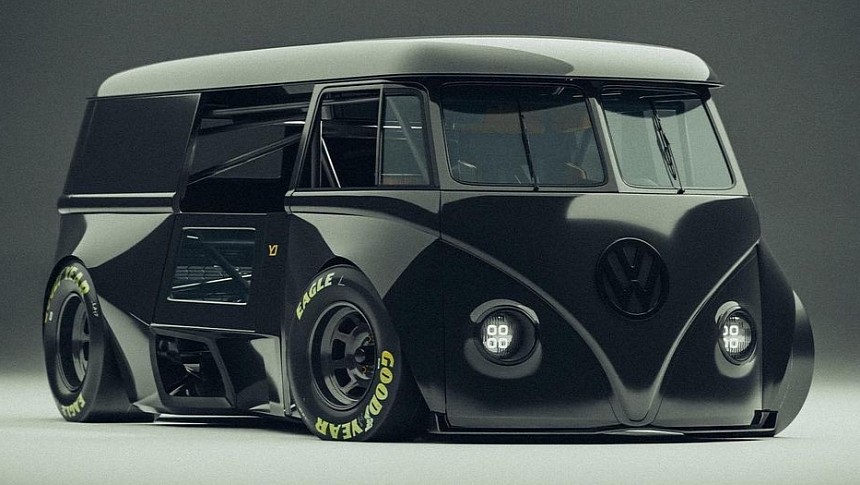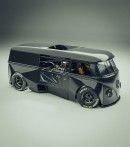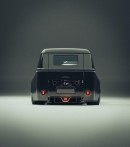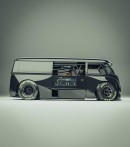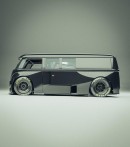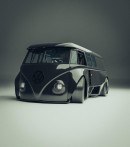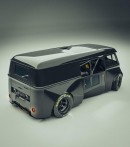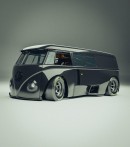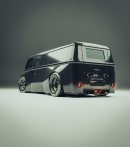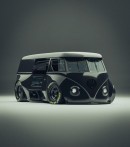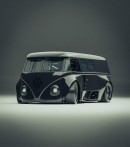If you cannot understand the hype surrounding the Volkswagen Bus, fret not, fellow petrolhead, because it's not something I'm into either. What I can acknowledge, however, is its legendary status and the fact that I cannot help but stare whenever one drives by, though it does not happen that often.
During the 17-year production run in Europe and the United States, Volkswagen made numerous variations of the first-gen Type 2. Minibus, panel van, panel truck, and regular and crew cab pickup versions of the model were released from 1950 to 1967, and all of them shared the same T1 platform. They had rear-engine and rear-wheel drive layouts, with the powertrain family consisting of small gasoline units that were constantly upgraded over the years.
As it has become the norm to mention past music festivals in a story dedicated to the VW Bus, consider this the official Woodstock reference. Numerous examples transported (pun intended) the excited young people to the famous music festival hosted in 1969, and most of them wore bright colors. They also featured sleeping accommodations long before the van life movement. In fact, you can pretty much consider this model to have started the home-away-from-home trend, as it was not uncommon back in the day to see Buses modified to resemble tiny homes, and it still isn't.
The iconic T1 paved the road for all other T models that followed in Volkswagen's lineup. You have the T2 that was introduced in 1967, its successor, the T3, and eventually the Transporter (T4) of the 1990s. The latest is the T7, which entered production two years ago at the brand's Hanover facility in Germany. It's based on the versatile MQB Evo platform, the same one used on the Golf Mk8 and Caddy Mk4. It's the same construction that underpins the modern-day SEAT Leon, Skoda Octavia, Audi A3, Q6, Cupra Formentor, and the Ford Tourneo Connect. The latter is the VW Caddy's mechanically-related cousin with tweaked looks that comes to life in Poland and is offered with gasoline and diesel engines.
Taking the VW Bus into the new era of electric vehicles is the ID. Buzz. The battery-electric model builds on the legacy of the original, and it was first shown in concept form at the 2017 NAIAS. The production variant was introduced a little over a year ago, and the assembly kicked off last summer. It is based on the MEB platform, an architecture dedicated to EVs, shared with the Audi Q4 e-tron, Q5 e-tron, Skoda Enyaq iV, Cupra Born, and the ID.3, ID.4, ID.5, and ID.6 from Volkswagen. A re-bodied ID.4 aimed at the European market, the Ford Explorer EV uses the same nuts and bolts. The ID. Buzz is not a flower-power vehicle, but it is still an essential product for the brand, targeting both private buyers and business owners with the minivan and panel van versions.
Now, as you have probably figured out from the fact that I'm not the most well-researched writer when it comes to the Volkswagen Bus and the pictures shared in the gallery above, this story is not dedicated to purists. In fact, you don't have to have a thing for the iconic model to appreciate a heavily modified example that calls the rendering world home. It features more modifications than it should, and most are technical, with the visual ones being more of a necessity than a quirk. The muscly body is defined by those fat fenders that have sharp edges, large intakes in front of the rear wheels to feed hypothetical air to the engine, a roof scoop that serves the same purpose, and very clean front and rear back ends that stay true to the styling of the original to some extent.
Those Goodyear-branded tires are a good indication that you are not looking at the usual Bus, as if you could mistake it for one that packs a small air-cooled lump at the rear, and it has very few inches between the road and its belly. Two exhaust tips come out from the rear, and it has a racing-like brake light incorporated in the middle of the diffuser. The placement of the power unit makes it an actual mid-engine car; by the looks of it, such a build would have perfect 50:50 weight distribution. Moreover, the low center of gravity combined with a clever suspension setup would make it an apex hunter at the local racetrack with a skilled driver holding the wheel.
Too bad it only exists in CGI land, sketched out by al.yasid and shared on social media earlier in the week, as it would have been something monumental as far as the Volkswagen Bus is concerned to people who don't give a flying hoot about this model. But are you part of this crowd, or are you a diehard fan of it?
As it has become the norm to mention past music festivals in a story dedicated to the VW Bus, consider this the official Woodstock reference. Numerous examples transported (pun intended) the excited young people to the famous music festival hosted in 1969, and most of them wore bright colors. They also featured sleeping accommodations long before the van life movement. In fact, you can pretty much consider this model to have started the home-away-from-home trend, as it was not uncommon back in the day to see Buses modified to resemble tiny homes, and it still isn't.
The iconic T1 paved the road for all other T models that followed in Volkswagen's lineup. You have the T2 that was introduced in 1967, its successor, the T3, and eventually the Transporter (T4) of the 1990s. The latest is the T7, which entered production two years ago at the brand's Hanover facility in Germany. It's based on the versatile MQB Evo platform, the same one used on the Golf Mk8 and Caddy Mk4. It's the same construction that underpins the modern-day SEAT Leon, Skoda Octavia, Audi A3, Q6, Cupra Formentor, and the Ford Tourneo Connect. The latter is the VW Caddy's mechanically-related cousin with tweaked looks that comes to life in Poland and is offered with gasoline and diesel engines.
Now, as you have probably figured out from the fact that I'm not the most well-researched writer when it comes to the Volkswagen Bus and the pictures shared in the gallery above, this story is not dedicated to purists. In fact, you don't have to have a thing for the iconic model to appreciate a heavily modified example that calls the rendering world home. It features more modifications than it should, and most are technical, with the visual ones being more of a necessity than a quirk. The muscly body is defined by those fat fenders that have sharp edges, large intakes in front of the rear wheels to feed hypothetical air to the engine, a roof scoop that serves the same purpose, and very clean front and rear back ends that stay true to the styling of the original to some extent.
Those Goodyear-branded tires are a good indication that you are not looking at the usual Bus, as if you could mistake it for one that packs a small air-cooled lump at the rear, and it has very few inches between the road and its belly. Two exhaust tips come out from the rear, and it has a racing-like brake light incorporated in the middle of the diffuser. The placement of the power unit makes it an actual mid-engine car; by the looks of it, such a build would have perfect 50:50 weight distribution. Moreover, the low center of gravity combined with a clever suspension setup would make it an apex hunter at the local racetrack with a skilled driver holding the wheel.
Too bad it only exists in CGI land, sketched out by al.yasid and shared on social media earlier in the week, as it would have been something monumental as far as the Volkswagen Bus is concerned to people who don't give a flying hoot about this model. But are you part of this crowd, or are you a diehard fan of it?
